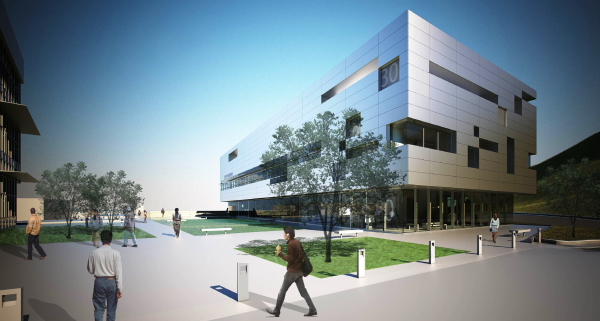A new Solar Energy Research Center (SERC) in Berkeley aims not only to create green energy through artificial photosynthesis technology; it is designed to operate sustainably, shooting for a LEED Gold Rating.

“This is a very high-tech project and the science on it is super exciting,” says Suzanne Napier, principal in charge for SmithGroup JJR, San Francisco, the project’s designer.
Located on the campus of UC Berkeley, the $54-million SERC building broke ground October 19 and will become part of the Lawrence Berkeley National Laboratory (LBNL), a U.S. Department of Energy national laboratory complex conducting scientific research.
The mission of the project is to create sustainable, carbon-neutral sources of energy, with a focus on the generation of new photovoltaic solutions developed within vibration-sensitive laboratories.
When envisioning the facility, the project team wanted the three-story structure close to other existing hi-tech labs, so researchers could have a small core group of collaborative and interactive research buildings. Because of this, the 40,000-sq-ft SERC was designed to fit into a small footprint.
“The project site is very confined,” says Rich Henry of McCarthy Building Companies, San Francisco, the project’s contractor. “It sits on a hill, on a high-security campus, and is bound on all sides by existing buildings and a main access road through campus; the project literally takes up almost every inch of the site.”
Henry, who is president of the company’s Northern Pacific Division, says an enormous amount of planning has gone into making sure the building fits in place, as its foundations come within a few yards of other foundations, and another construction crew.
“When you are working this close to somebody else you have to significantly communicate in advance everything that is going on,” says Henry. “You have to have a very detailed plan that you coordinate with the other builder, so lines of communication are very frequent.”
Napier also recognized site constraints.
“One of the biggest architectural challenges on this project is the tight and topographically steep site,” says Napier. She says with another new building going up about 15 ft away from this project, her team decided to create an oversized first-level floor plate. This would give SERC a large, stable area on the first floor for its abundant vibration sensitive equipment, and also create an engaging outdoor plaza space.

Post a comment to this article
Report Abusive Comment